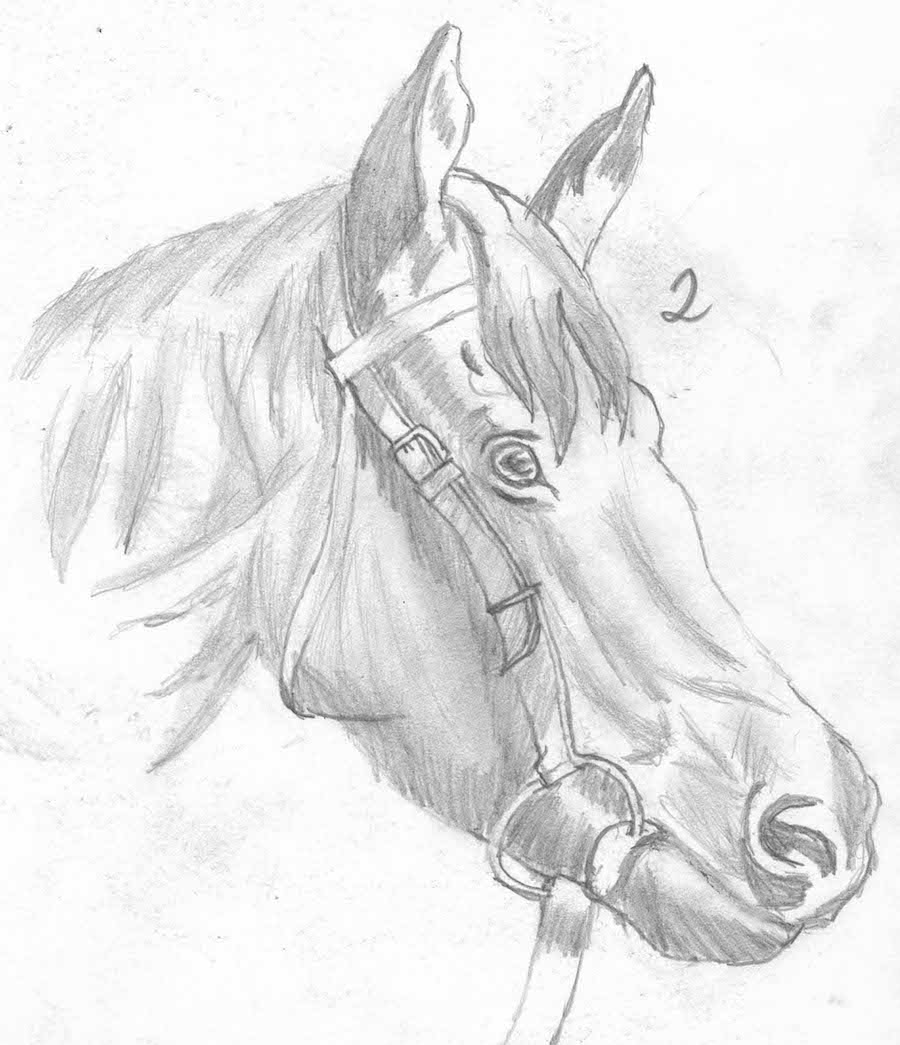A meeting of the minds

Those who know Dr. Josep Rizo can understand his fascination with the brain. After all, he’s a man of more than two minds – equally at home in neuroscience, in art, and in chess, to name a few.
The Professor of Biophysics, Biochemistry, and Pharmacology was born in Barcelona, Spain. As a child, he could have envisioned a career in art. His depiction of the horse below, done at age 9, is eerily reminiscent of the early representational drawings of another Spanish artist, Pablo Picasso.
But Dr. Rizo, known as Dr. Jose Rizo-Rey on campus, faced comparisons from a very early age with yet another renowned Spanish artist: his twin brother, Lluís Rizzo Rey. “He was a better artist,” Dr. Rizo says.

Could the UT Southwestern scientist’s unique outlook be in response to growing up with his own doppelganger?
He turned his attention from art to chess, aspiring to become an internationally competitive player, and at age 17 beat Spain’s chess champion. He explains that art, science, and chess all require observation coupled with the intense focus necessary to excel at any endeavor. The ability to think a few moves ahead can’t hurt.
“I was really obsessed with chess. It was my chess teacher who convinced me that playing chess professionally was not a good life and I decided to go to college,” he recalls.
To quote another famous artist, “Life is what happens to you while you’re busy making other plans” (John Lennon, Double Fantasy, 1980). That could sum up Dr. Rizo’s scientific journey.
He became a scientist because he wanted to know how the world functions and came to Dallas to do postdoctoral work on protein folding with Dr. Lila Gierasch, now at UMass Amherst, expecting to stay a couple of years and return to Europe. However, he loved the scientific environment of UT Southwestern, where while planning to start his own laboratory he launched a still ongoing collaboration with Dr. Thomas C. Südhof, former Chair of Neuroscience and now a UT Southwestern adjunct professor.
The pair were planning to meet to celebrate their more than 20 years of collaboration when Dr. Südhof, now based at Stanford University, won the 2013 Albert Lasker Basic Medical Research Award and invited his longtime colleague to be his guest at the award luncheon in New York. Dr. Rizo co-authored half of the six papers listed on the Lasker website as key to Dr. Südhof’s prize.

Asked at the time by the Los Angeles Times about Dr. Südhof’s work – most of it done during his more than two decades at UT Southwestern – Dr. Rizo described it as “like finding the alphabet.”
Just days after flying to New York for the Lasker luncheon, Dr. Rizo received news of Dr. Südhof’s selection for the 2013 Nobel Prize in Physiology or Medicine, which was followed by an invitation to be one of the winner’s guests at the Nobel Prize ceremony. Dr. Südhof won for pioneering work performed at UT Southwestern on synaptic transmission, much of it done with Dr. Rizo, who holds the Virginia Lazenby O’Hara Chair in Biochemistry.
Dr. Rizo has since sustained his intense focus on expanding the world’s knowledge of neurotransmission, the brain chemical messaging system that enables us to experience our thoughts, sensations, and emotions at such astonishing speed.
“The release of neurotransmitters in neuronal synapses is central for brain function and involves the fusion of synaptic vesicles, which contain the neurotransmitters, with the plasma membrane. Hence, elucidating the mechanism of neurotransmitter release is a major challenge in neuroscience,” he explains.

The fusion of synaptic vesicles with the plasma membrane was known to depend on proteins called SNAREs that form a tight complex, thus bringing the two membranes into close proximity. However, many other proteins also play key roles, including Munc13 and Munc18, which the Südhof laboratory showed to be essential. That line of research is shaking up the field, showing how the multiple factors work together to control synaptic vesicle fusion.
In a 2013 study published in Science, the Rizo laboratory recapitulated synaptic vesicle fusion in the test tube using synthetic vesicles and the eight most central proteins of the neurotransmitter release machinery.
That study found that fusion between the vesicles strictly required Munc18 and Munc13, which coordinate formation of the SNARE complex and prevent its disassembly by other proteins.
More recently, the laboratory published three papers in eLife that built on that work and further elucidated the functions of Munc18 and Munc13.
- In one paper, the research group showed that Munc18 forms a template to assemble the SNARE complex.
- A second paper found that Munc13 helps to form the SNARE complex by providing a bridge between the two membranes.
- The third study described the structure at atomic resolution, which indicates that Munc13 is highly elongated and may mediate different forms of regulation of neurotransmitter release by bridging the two membranes in different orientations that make membrane fusion more or less likely.
Overall, these studies provided seminal insights into the mechanism of neurotransmitter release and its regulation during modulatory processes that underlie diverse forms of information processing in the brain.
In 2016, Dr. Rizo became a member of the first class of 30 U.S. researchers selected by the National Institute of Neurological Disorders and Stroke (NINDS) for its R35 Research Program Awards. The program encourages “ambitious, creative science by providing stable funding to outstanding investigators’ research programs, offering them the freedom to pursue longer-term, innovative research projects.”
Stay tuned ...

